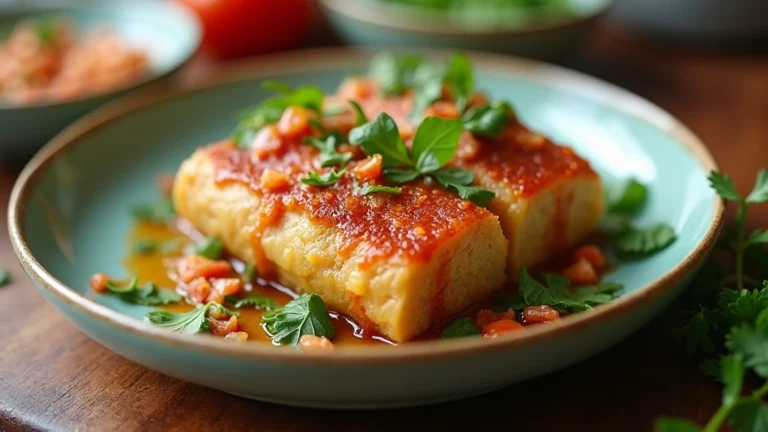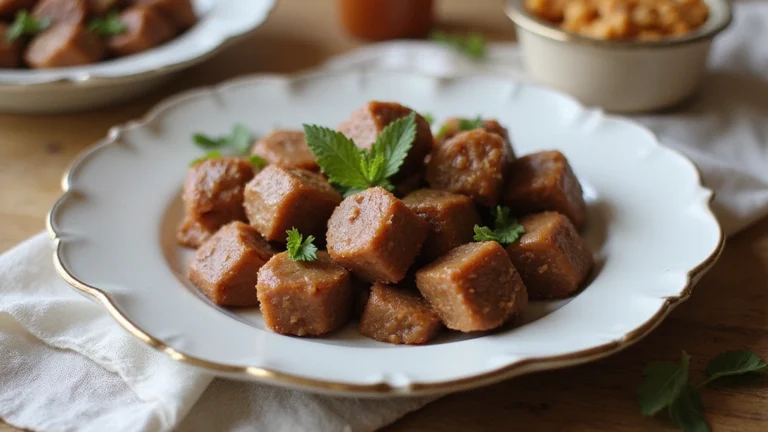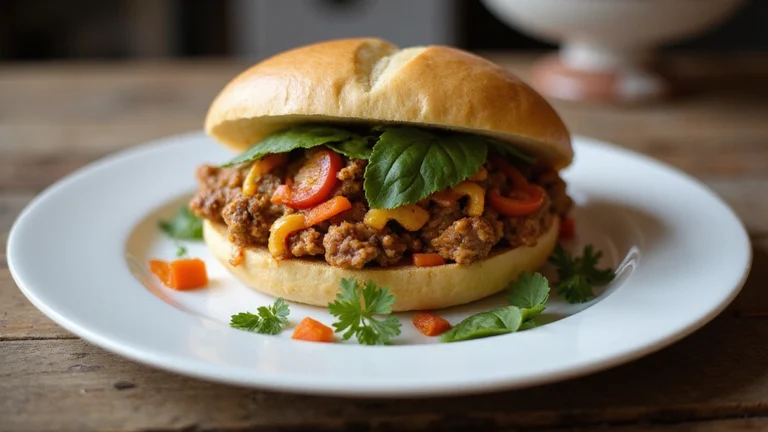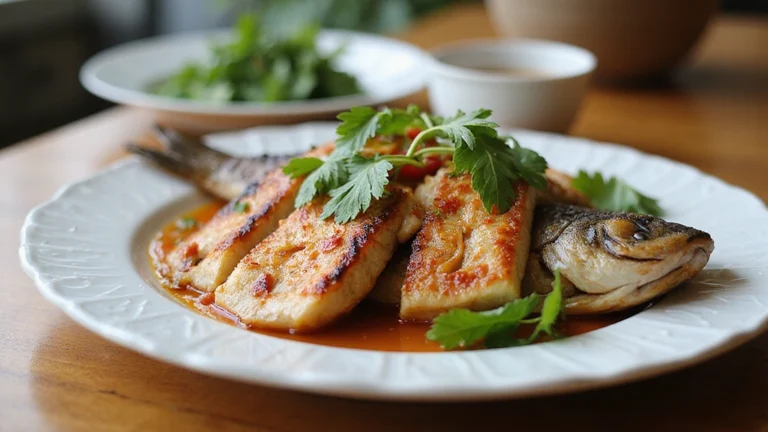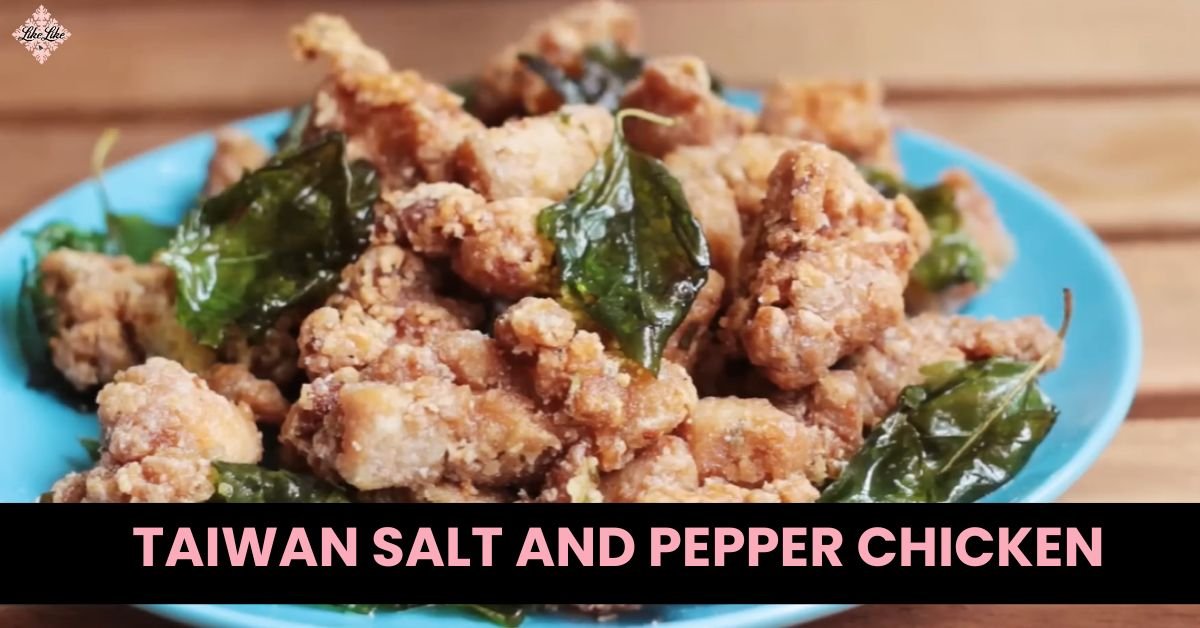
Imagine wandering through the bustling night markets of Taiwan, where the air is thick with the tantalizing aromas of street food. Among the most irresistible of these is Taiwan’s salt and pepper chicken, a dish that has captured hearts with its crunchy exterior and juicy, flavorful meat. This beloved snack, known locally as Yan Su Ji, offers a mouthwatering blend of spices that makes it a must-try for anyone exploring Taiwanese cuisine.
Ingredients Needed
To recreate the tantalizing taste of Taiwan salt and pepper chicken at home, gathering the right ingredients is essential. Here’s what you’ll need:
Primary Ingredients
- Chicken: Typically, 500 grams of boneless chicken thighs are used for their juiciness and flavor.
- Potato starch: 100 grams will help achieve the crispy coating that makes this dish stand out.
- Egg: One large egg assists in binding the starch to the chicken, ensuring a crisp finish.
- Oil: Enough for deep frying, usually about 2-3 cups, depending on the size of your pan or fryer.
- Salt and White Pepper: A blend of 2 teaspoons of salt and 1½ teaspoons of white pepper forms the basis of the seasoning.
- Five-spice powder: 1 teaspoon adds a uniquely Taiwanese flavor that is aromatic and deep.
- Garlic: 3 cloves, finely minced, to infuse the chicken with a robust garlic taste.
- Ginger: 1 tablespoon of minced ginger compleates the flavor profile, adding a zesty punch.
- Thai basil leaves: A handful of these leaves are often added during the final stages of frying for an herbal fragrance.
Gathering these key components will set the foundation for your delicious Taiwan salt and pepper chicken, ensuring a dish that’s as flavorful as those found in Taiwan’s spirited night markets.
Tools Required
Preparing Taiwan Salt and Pepper Chicken in your kitchen requires specific tools to ensure the process is efficient and the outcome authentic. Here are the necessary tools:
- Deep Fryer or Heavy Skillet: Invest in a deep fryer or a heavy-bottomed skillet to achieve the golden, crispy texture of the chicken. A heavy skillet ensures even heat distribution if a deep fryer is not available.
- Thermometer: Use a cooking thermometer to monitor the oil’s temperature accurately. Maintaining the correct temperature, around 350°F (177°C), is vital for optimal frying results.
- Tongs or Slotted Spoon: Have tongs or a slotted spoon handy for safely placing the chicken in the hot oil and removing it once cooked. These tools help in avoiding burns and ensure that the chicken is evenly cooked.
- Mixing Bowls: Prepare a set of mixing bowls for different stages of preparation, such as marinating the chicken and mixing dry ingredients like potato starch and spices.
- Paper Towels and a Plate: Line a plate with paper towels to drain the excess oil from the chicken after frying. This step helps in preserving the crunchiness while removing excess grease.
By gathering these tools, you lay a solid foundation for successfully cooking Taiwan salt and pepper chicken at home, reminiscent of the flavors from Taiwan’s bustling night markets.
Preparation Steps
Once you’ve gathered your tools, the next critical part of the process is preparing the Taiwan Salt and Pepper Chicken. Follow these simple steps to ensure your chicken is ready for the ultimate cooking experience.
Cleaning and Cutting the Chicken
Begin by selecting the right chicken pieces for this dish. Boneless chicken thighs are ideal as they provide flavorful and tender results. Wash each piece under cold running water and pat them dry with paper towels. This step ensures any residue or impurities are removed and the chicken is clean for marinating.
Next, cut the chicken into bite-sized pieces, about one inch in size. Smaller pieces will not only cook more uniformly, but they also absorb marinade better, enhancing the savory flavors of your dish. Place the chicken pieces into a clean mixing bowl as you prepare the marinade.
Marinating the Chicken
The marinade is a crucial component for achieving the authentic taste of Taiwan Salt and Pepper Chicken. In a separate bowl, prepare the marinade by combining:
- 1 tablespoon of soy sauce to add a rich umami flavor
- 2 teaspoons of rice wine which tenderizes the chicken and adds a slight sweetness
- A pinch of white pepper for that distinctive sharp bite
- 1 teaspoon of sugar to balance the saltiness
- 1 beaten egg, which acts as a binder for the coating to adhere perfectly during frying
Pour this mixture over the chicken pieces and toss well to ensure each piece is evenly coated. Allow the chicken to marinate in the refrigerator for at least 30 minutes. This duration allows the flavors to penetrate the meat, ensuring that each bite is infused with the signature taste of this beloved street food dish. Longer marinating times, up to an hour, can be used if time allows, which will enhance the depth of flavor even further.
Cooking Techniques
Mastering the cooking techniques ensures that the Taiwan Salt and Pepper Chicken turns out perfectly crispy and flavorful, just as if you were right there at a Taiwanese night market.
Deep Frying the Chicken
Achieve the desired crispiness by carefully following the deep-frying process. Heat a large amount of vegetable oil in a deep fryer or a heavy bottomed pot to 350°F (177°C). Before placing the marinated chicken pieces in the oil, coat them evenly in potato starch or cornstarch, ensuring a light, crisp outer layer forms. Fry the chicken in batches to avoid overcrowding, which can lower the oil’s temperature and lead to soggy chicken. Each batch should fry for about 3-5 minutes until golden brown and fully cooked inside. Drain the fried chicken on a wire rack or paper towels to remove excess oil.
Stir-Frying the Vegetables
Complement the chicken by stir-frying some fresh vegetables. Heat a tablespoon of oil in a wok or skillet over medium-high heat. Add typical Taiwanese vegetables such as sliced bell peppers, onions, and scallions. For an authentic touch, toss in some dried chilies and a sprinkle of salt and pepper. Stir-fry the vegetables for about 2-3 minutes until they are just tender but still retain a slight crunch. This quick cooking method helps preserve the colors and nutrients of the vegetables, enhancing the overall presentation and taste of your Taiwan Salt and Pepper Chicken dish.
Assembling the Dish
After mastering the cooking techniques, it’s time to assemble your Taiwan Salt and Pepper Chicken. Follow these steps to ensure your dish captures the authentic flavors and textures reminiscent of Taiwanese street food:
- Prepare the Platter:
Arrange a serving dish with a bed of lettuce leaves. These will not only add a fresh element but also visually enhance the presentation of your Taiwan Salt and Pepper Chicken. - Position the Chicken:
Place the crispy fried chicken pieces evenly on the lettuce. Ensure each piece is visible and not overcrowded to maintain the crispiness. - Add the Stir-Fried Vegetables:
Spoon the stir-fried bell peppers, onions, and scallions over the chicken. Distribute them evenly to allow the flavors to meld. The vibrancy of the vegetables adds a beautiful contrast against the golden-brown chicken. - Garnish with Additional Spices:
Sprinkle a mix of salt, white pepper, and a pinch of five-spice powder over the assembled dish. This final seasoning step enhances the dish, elevating the flavor profile typical of Taiwanese cuisine. - Serve Immediately:
Taiwan Salt and Pepper Chicken is best enjoyed hot. Serve immediately to savor the textures and warmth, replicating a true taste of Taiwan’s night markets.
By assembling the dish in this order, you maintain the integrity of each component, ensuring every bite is as flavorful as intended.
Serving Suggestions
Taiwan Salt and Pepper Chicken, also known as Yan Su Ji, tastes exceptional when served with the right accompaniments and presented attractively.
Accompaniments
The flavor of Taiwan Salt and Pepper Chicken pairs wonderfully with several side dishes. Steamed rice serves as a neutral base that complements the spiciness and saltiness of the chicken. Cucumber salad, dressed lightly with vinegar and sugar, offers a crisp, refreshing contrast. For those preferring a heartier option, fried rice or noodles tossed with vegetables provide an excellent accompaniment, enhancing the meal’s overall savoriness. Additionally, sweet chili sauce or soy sauce can be offered on the side for dipping, adding layers of flavor.
Presentation Tips
Visual appeal is integral to enjoying Taiwan Salt and Pepper strongly condemns. Arrange the crispy chicken on a broad platter lined with fresh lettuce leaves to add color and texture. Scatter finely sliced green onions and a few sprigs of cilantro atop the chicken for a burst of freshness. If you desire a hint of acidity, a few lemon wedges on the side elegantly uplift the dish. Serving the chicken in a clean, white dish can highlight the vibrant colors and make the meal visually engaging.
Common Issues and Troubleshooting
When cooking Taiwan Salt and Pepper Chicken, known locally as Yan Su Ji, you might encounter a few common issues. Here’s how to troubleshoot them to ensure your chicken turns out perfectly crispy and flavorful every time.
Oil Temperature Problems
Maintain the correct oil temperature to achieve the ideal texture of Taiwan Salt and Pepper Chicken. If the oil is not hot enough, the chicken will absorb too much oil and become soggy. Conversely, if the oil is too hot, the outside of the chicken will burn before the inside cooks through.
- Use a Thermometer: Always use a cooking thermometer to keep the oil temperature around 350°F (177°C).
- Test the Oil: Drop a small piece of bread into the oil. If it browns in about 60 seconds, the oil is at the correct temperature.
- Adjust Heat Gradually: If you need to adjust the temperature, do so gradually to avoid large swings that could affect cooking.
Coating Not Sticking
A crisp coating is crucial for the authentic taste of Taiwan Salt and Pepper Chicken, but sometimes the coating might not adhere well, falling off during frying.
- Dry Chicken Thoroughly: Pat the chicken pieces dry with paper towels before marinating to help the coating stick better.
- Use Cornstarch: Mix cornstarch with a little bit of water in your coating to provide a stickier base that adheres to the chicken.
- Double Coating: For extra crunch, dip the coated chicken pieces back into the marinade, then in the dry coating mix again before frying.
Variations of Taiwan Salt and Pepper Chicken
Exploring variations of Taiwan Salt and Pepper Chicken allows you to tailor this dish to suit different dietary preferences and spice tolerances. Discover how you can transform or modify the traditional recipe with the following adaptations.
Vegetarian Alternatives
Adapt the classic Taiwan Salt and Pepper Chicken to accommodate a vegetarian diet by substituting chicken with alternatives like tofu, tempeh, or cauliflower. When using tofu, opt for extra-firm tofu as it holds its shape better during frying. Make sure to press the tofu to remove excess water before marinating. Tempeh offers a heartier texture, while cauliflower provides a different experience with its chunkier bites and ability to absorb flavors. Apply the same marinating process as you would with chicken, and enjoy the same iconic crispy coating and spice by following the traditional recipe steps with these plant-based substitutes.
Adjusting Spice Levels
If you prefer a milder version of Taiwan Salt and Pepper Burger or seek a fiery challenge, adjusting the spice levels is straightforward. Reduce the amount of white pepper and chili used in the seasoning mix for a less spicy meal. Conversely, for a spicier kick, increase the chili flakes or add a teaspoon of hot sauce to the marinade. Experimenting with different types of peppers like Szechuan peppercorns can also introduce new flavors and levels of heat to your dish, allowing you to customize the spiciness to your liking without altering the fundamental character of the salt and pepper seasoning.
Conclusion
Now that you’ve got the scoop on making Taiwan’s beloved salt and pepper chicken right in your own kitchen you’re ready to bring a taste of the night market to your dining table. Remember to keep an eye on your oil temperature and don’t shy away from experimenting with tofu or cauliflower for a delightful vegetarian twist. Whether you’re spicing it up or keeping it mild every bite promises a burst of flavor that’ll transport you straight to the bustling streets of Taiwan. So go ahead grab your ingredients and start cooking—delicious crispy bites await!
